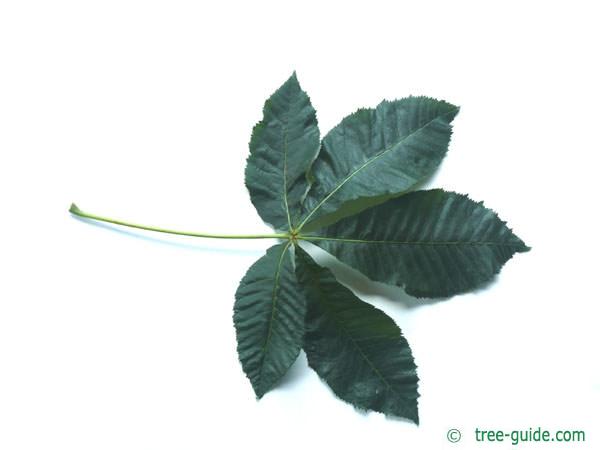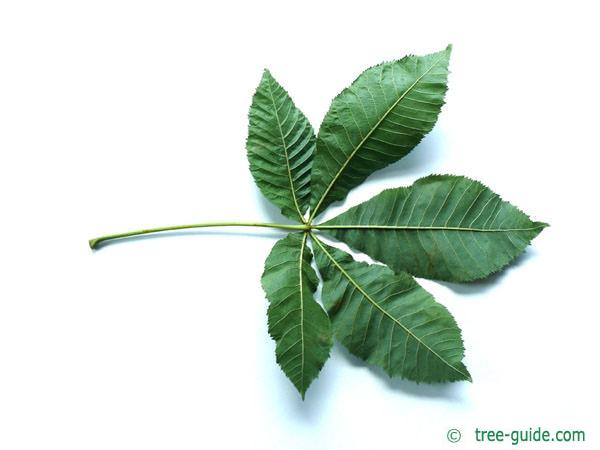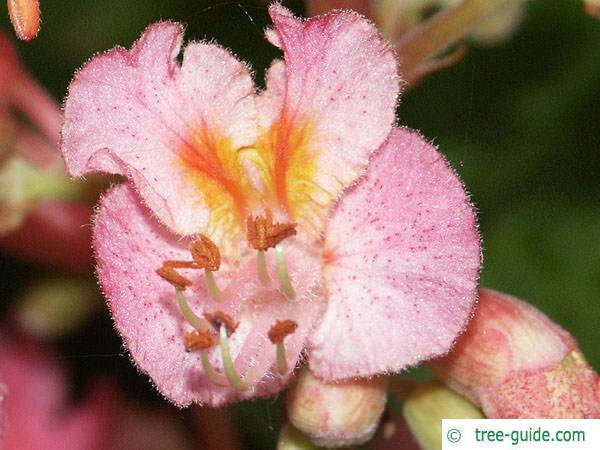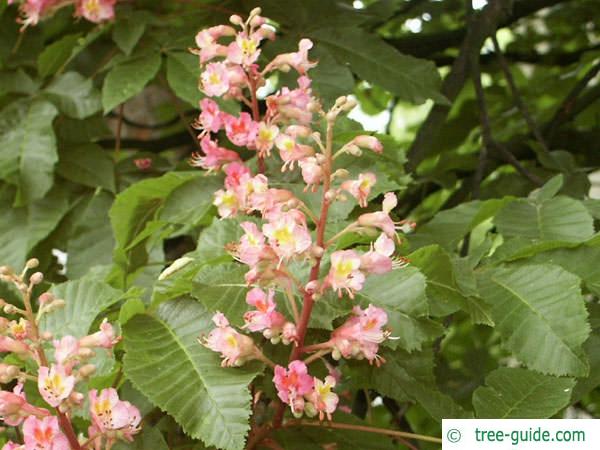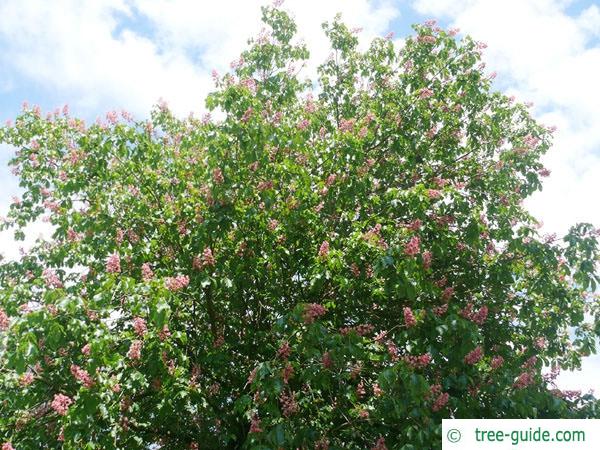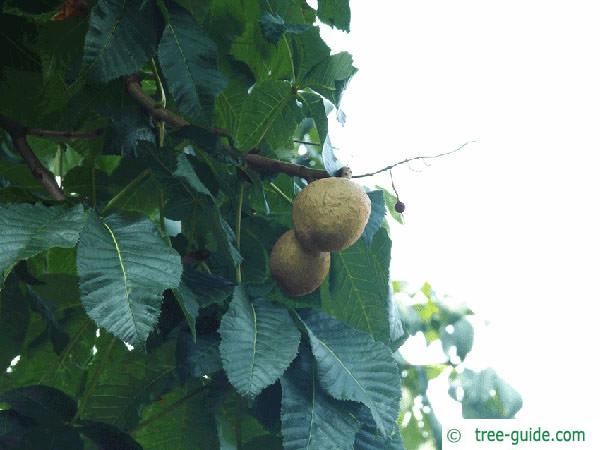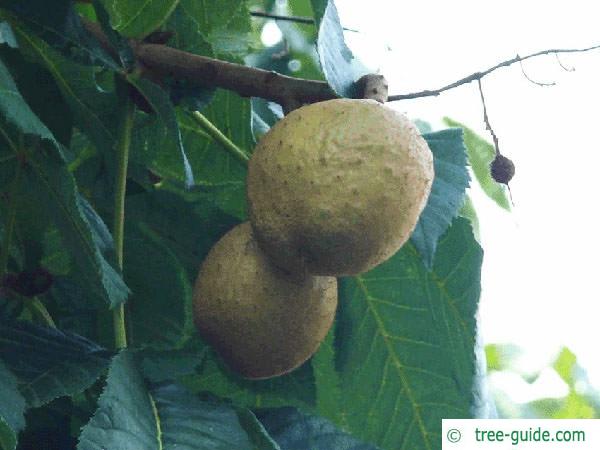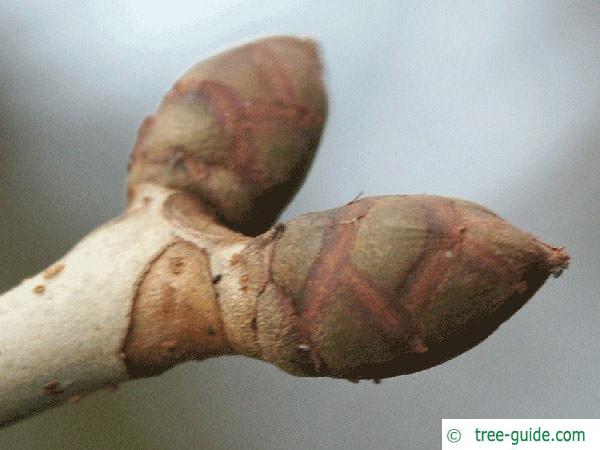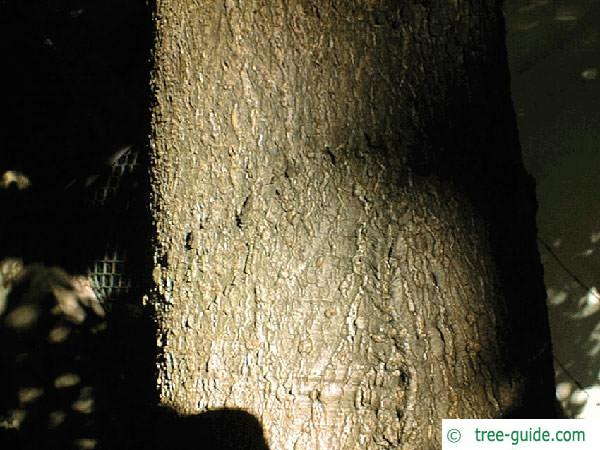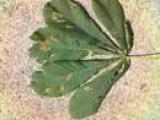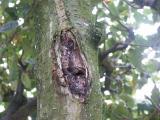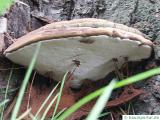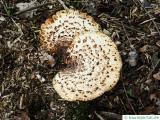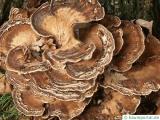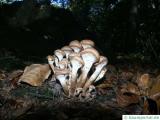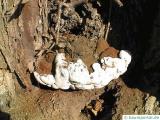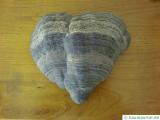Basisdaten
The red flowering buckeye is a bastard of the common horse chestnut. The chestnut red flowers and forms very few fruit.
Tree profile
The leaves of Ruby Horse Chestnut are palmately compound with usually with 5 leaflets. The leaflets are 8 - 15 cm (3.2 – 5.9 in) long. The petiole is long. The leaf margin of the leaflets is toothed.
The inflorescences are upright piston-like (flower candle) The inflorescences up to 25 cm (9.8 in) high. The flower color is light red.
The seeds are surrounded by a green fleshy capsule. Just a few fruits will be formed. The seed is brown and glossy.
The branches are brown and bare. At the end of the branch are often two buds side by side. The buds protrude from the twig.
single tree or planting in groups, avenue tree, parks tree
Buckeyes additional information
overview leaves | overview blossoms
overview fruit | overview trunk
overview winter | overview trees







